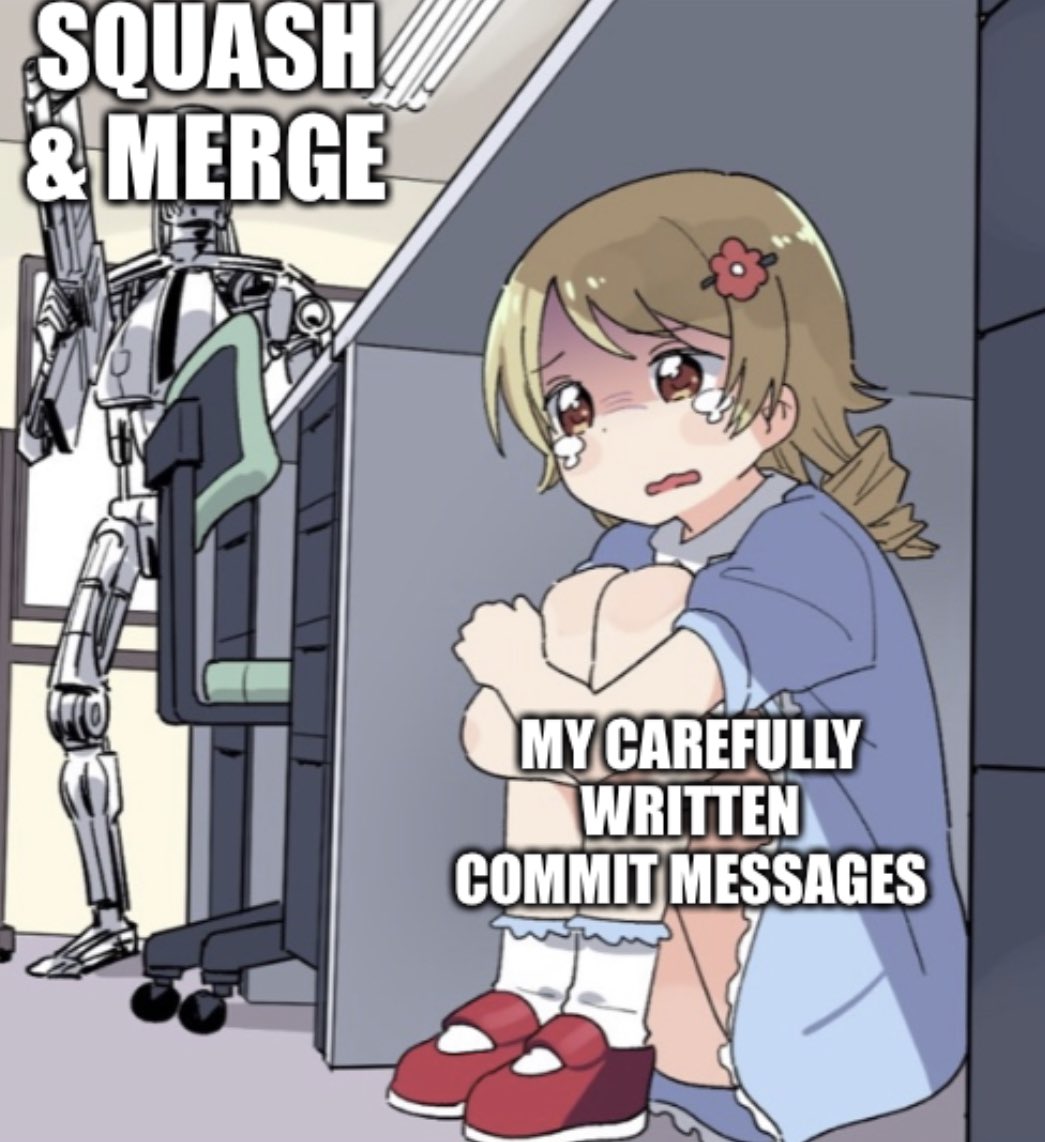Every so often I’ll see a meme on Twitter like:

and it makes me so mad. For good reason! OSS project repositories that support merge commits to main are usually littered with useless comments like: “Merge change from $USER, $PR”. It makes the commit history on main utterly useless and you get to check the various feature branches in a never ending snake of commits to find out what the hell changed.